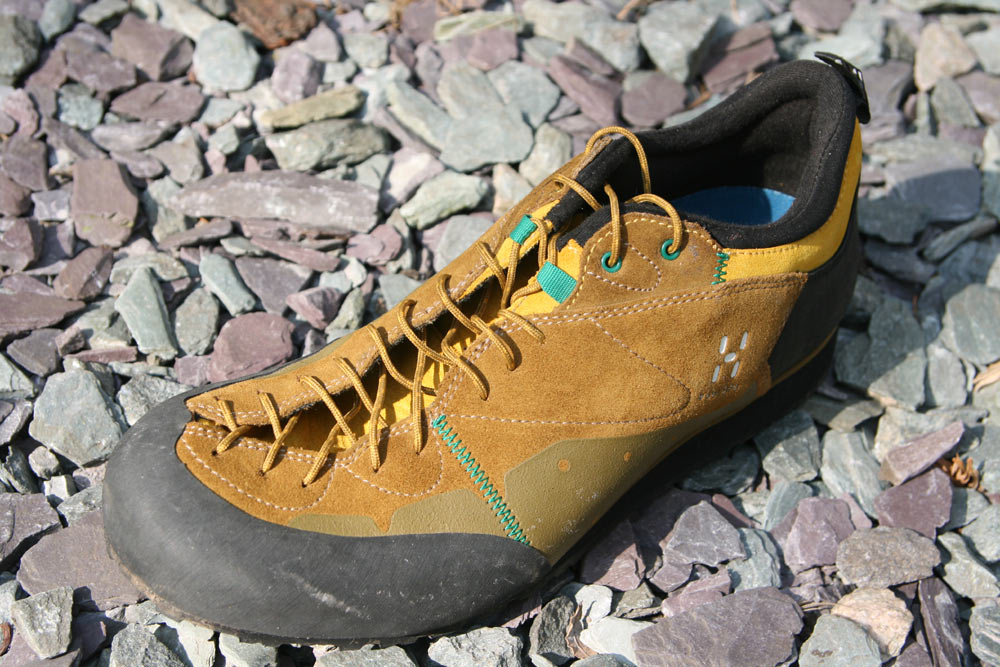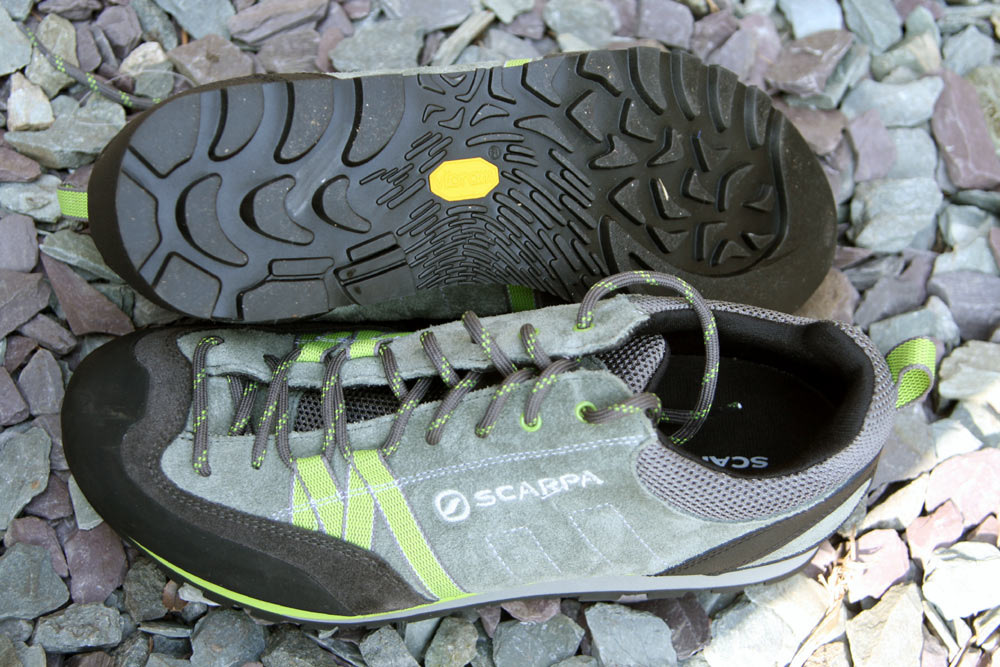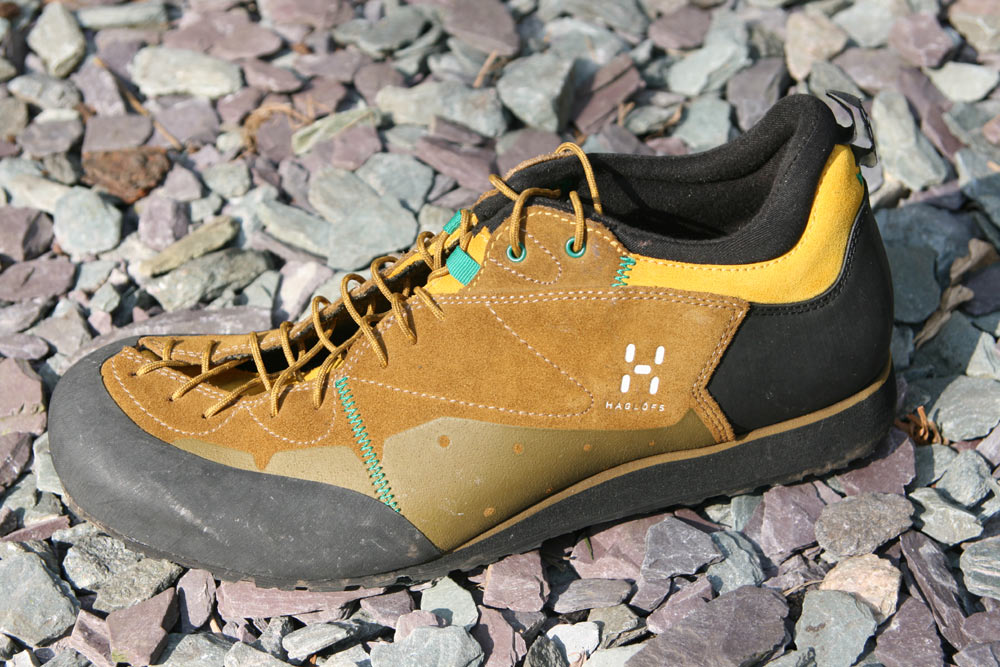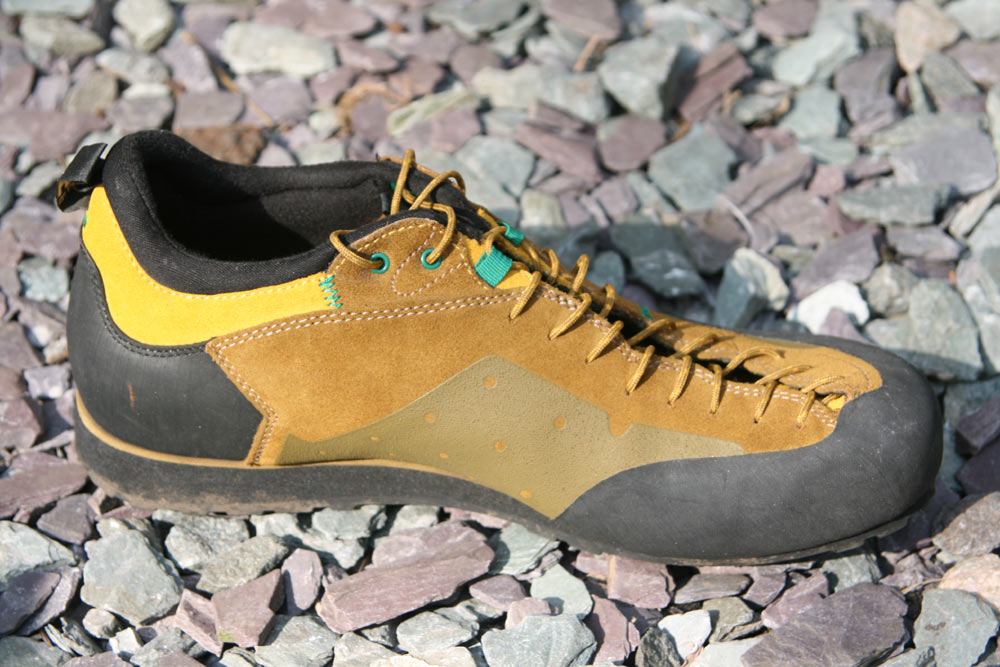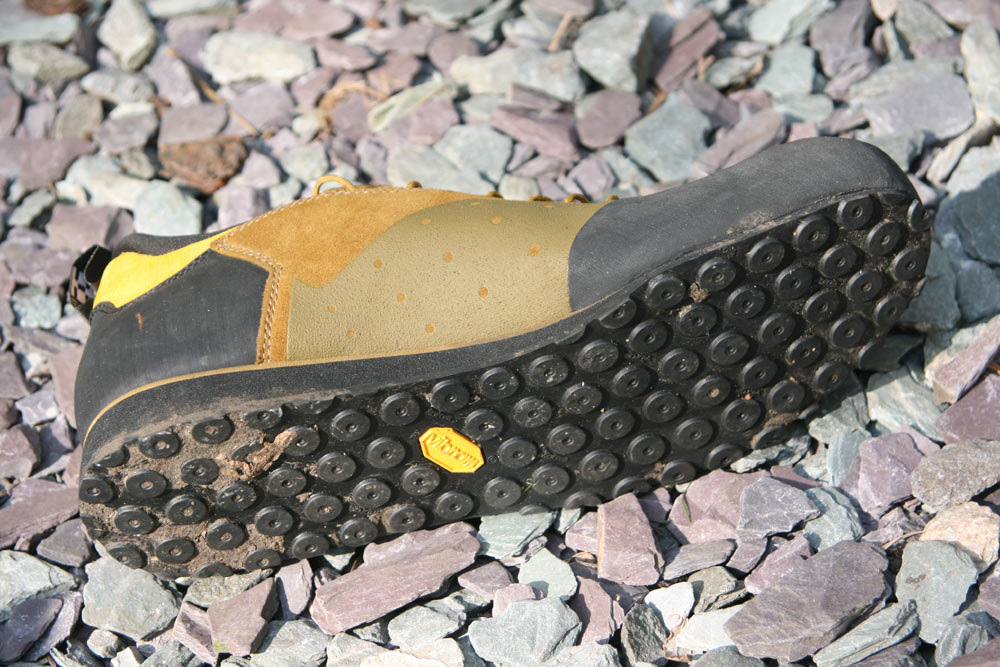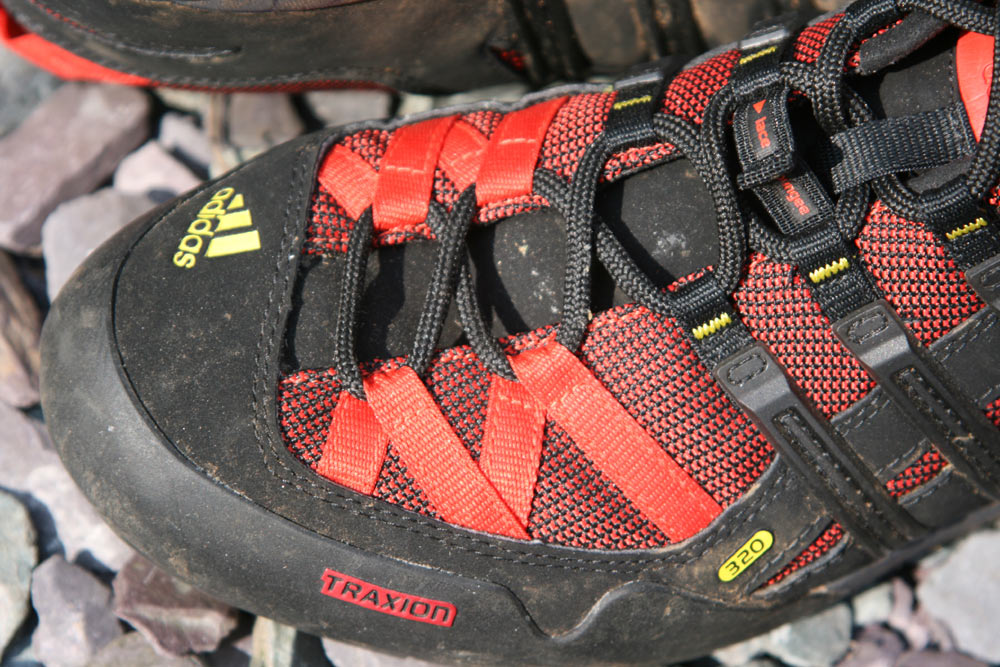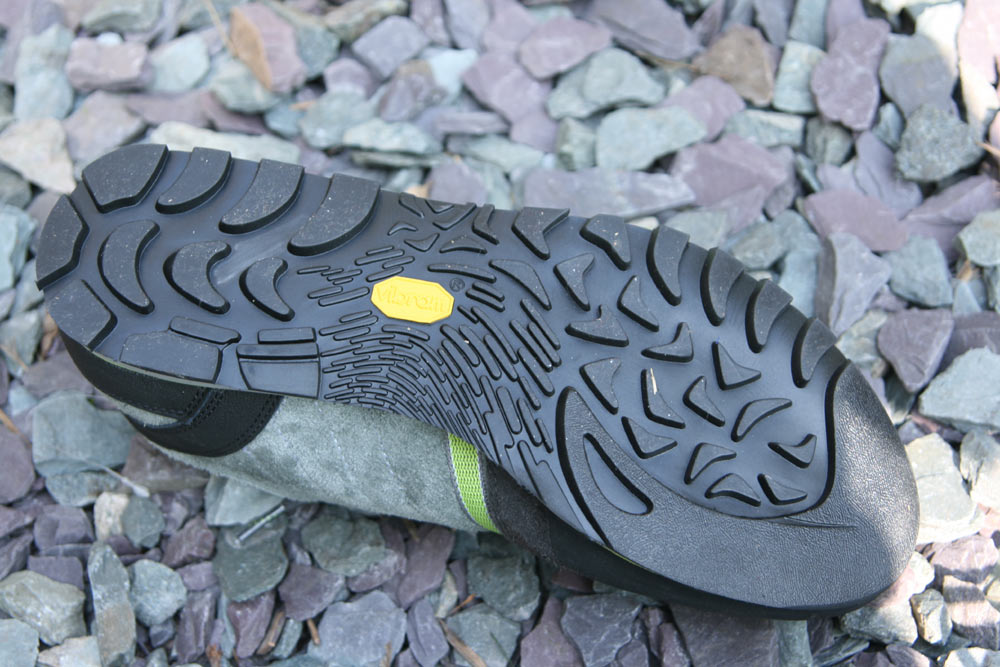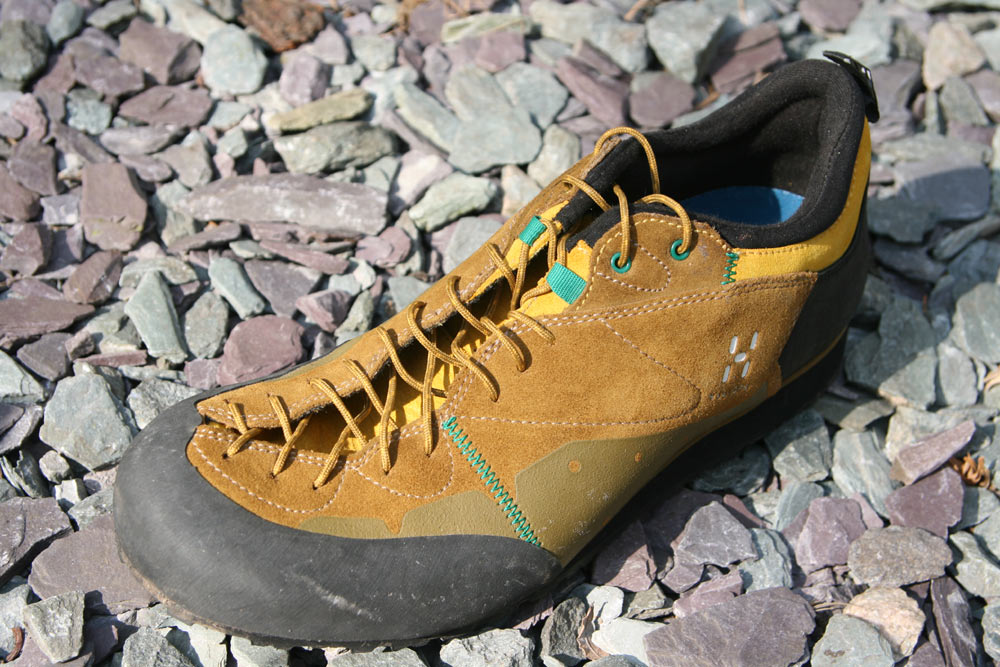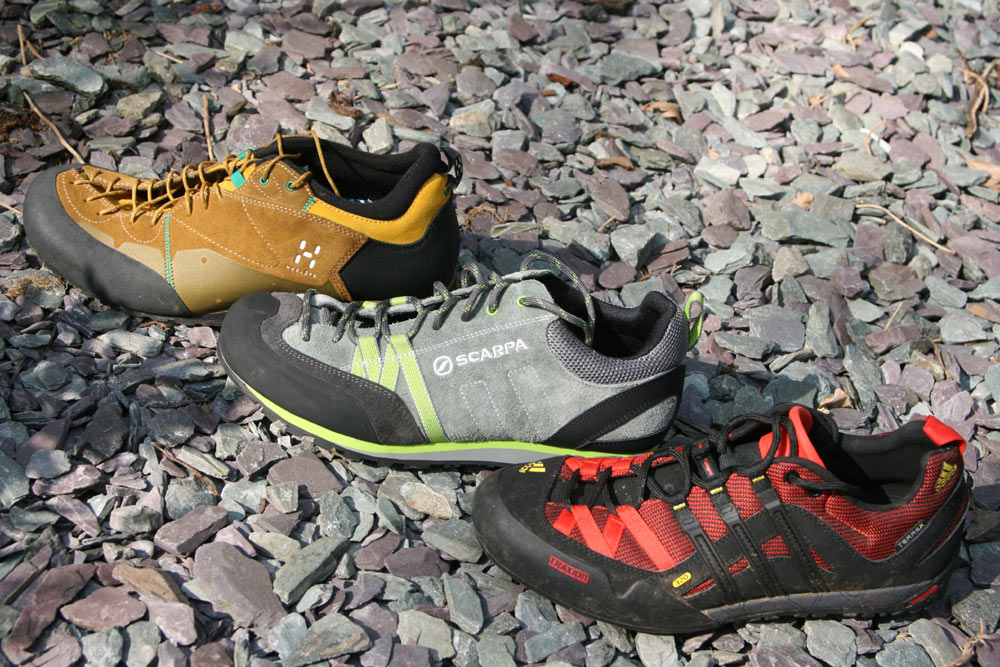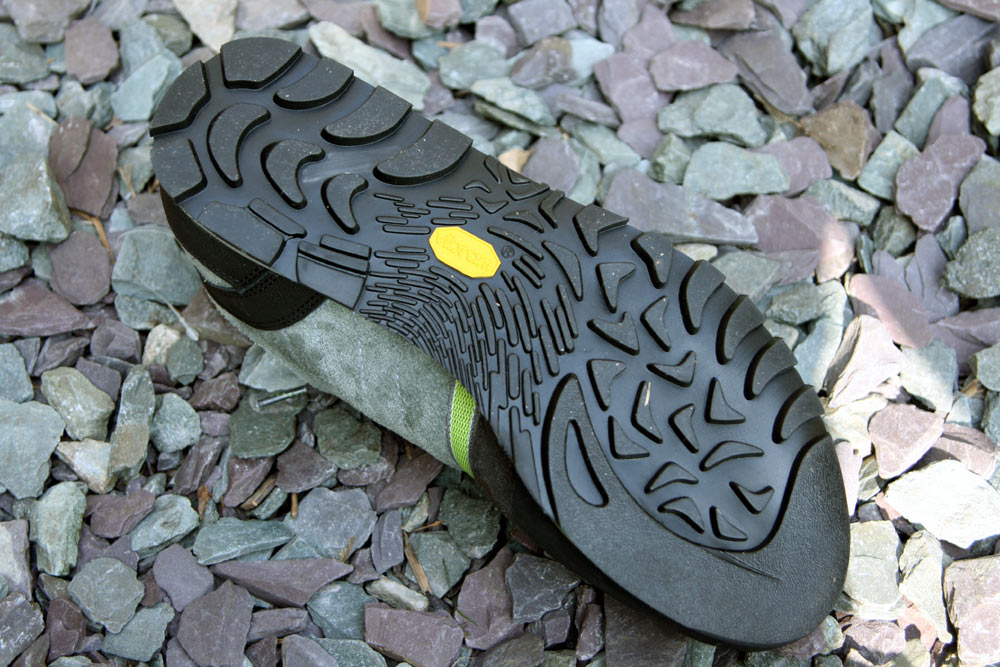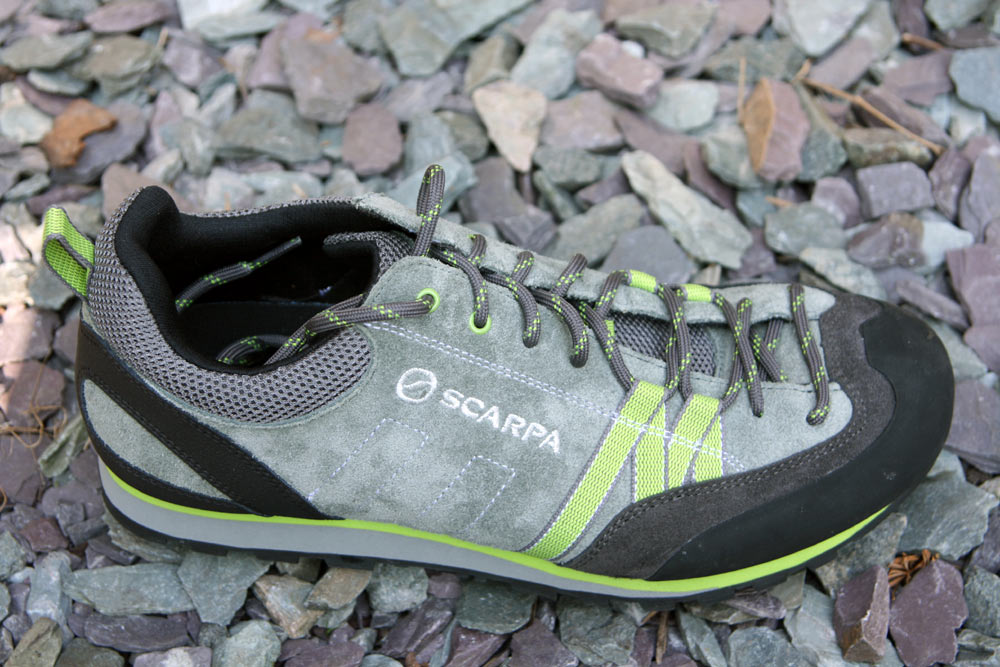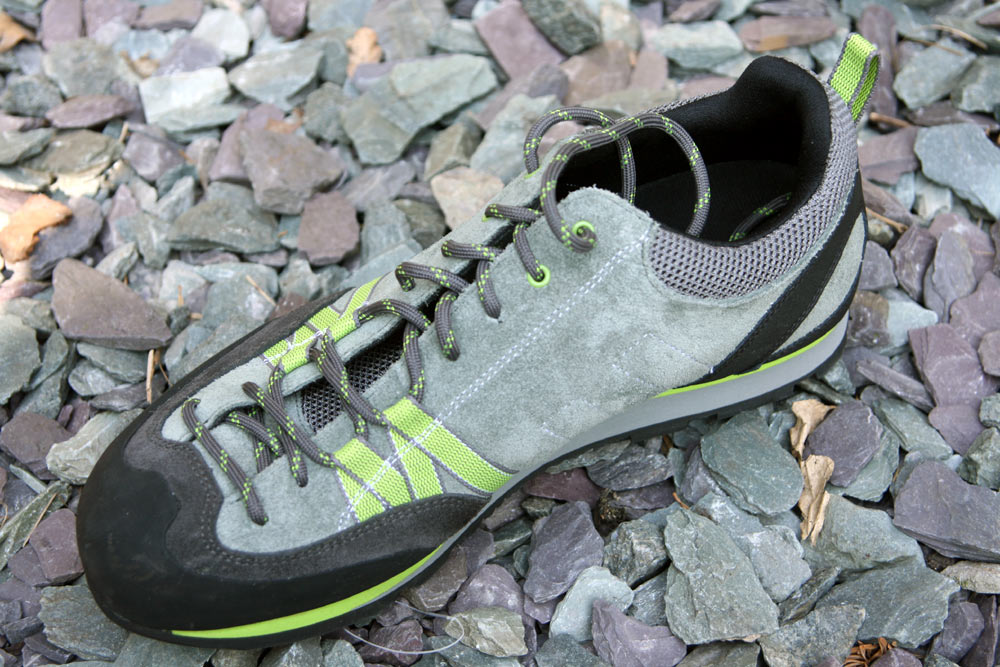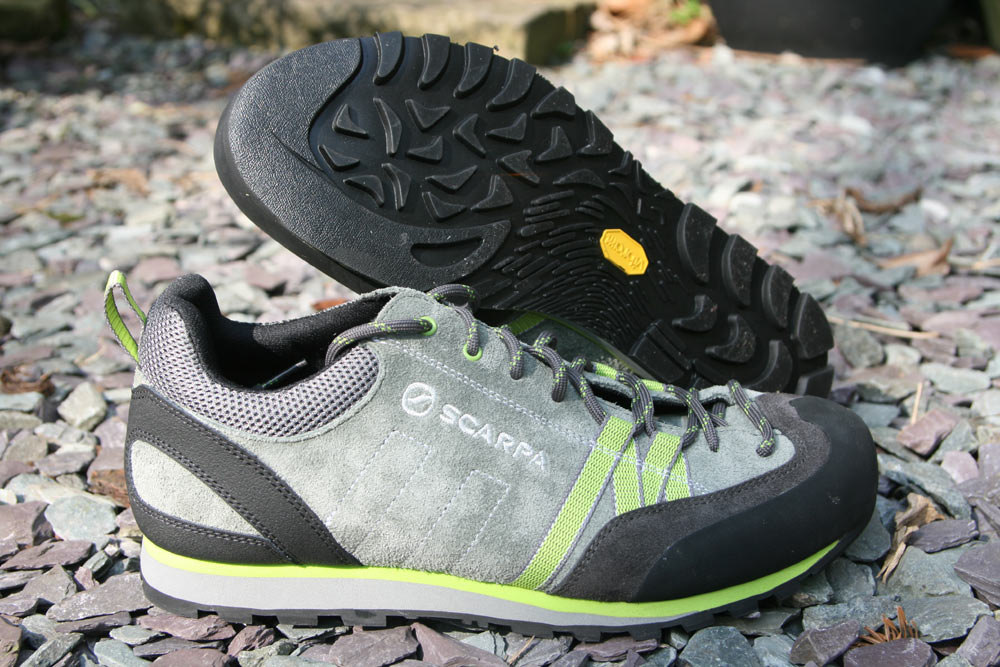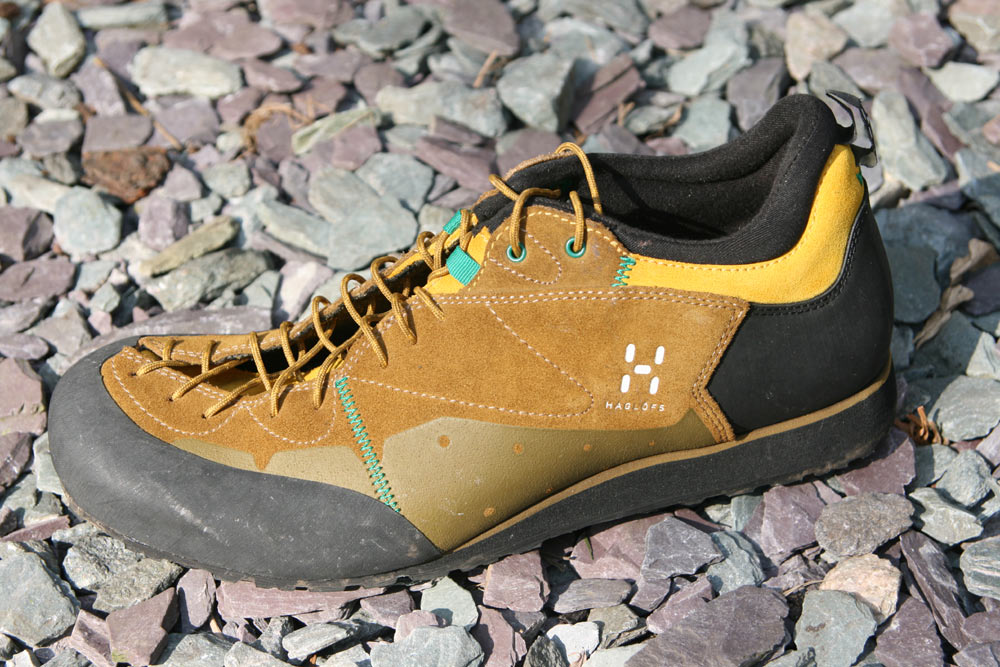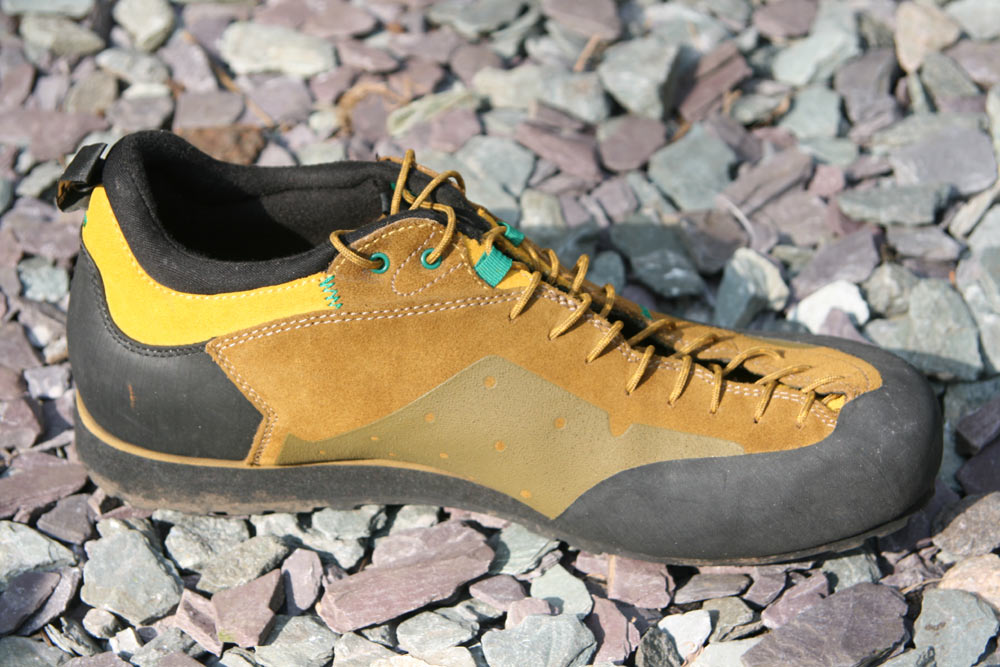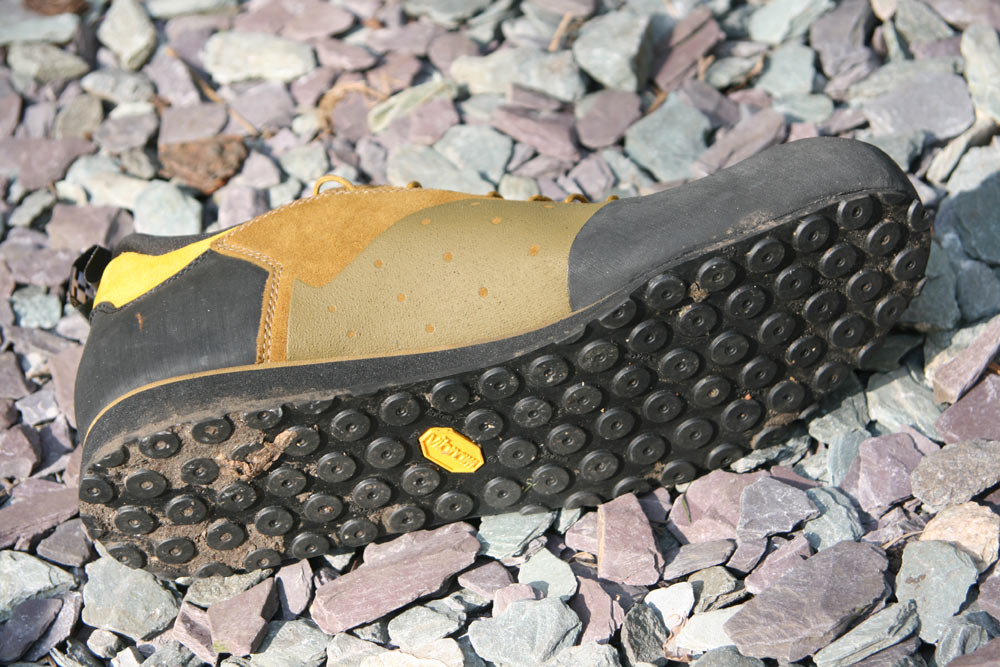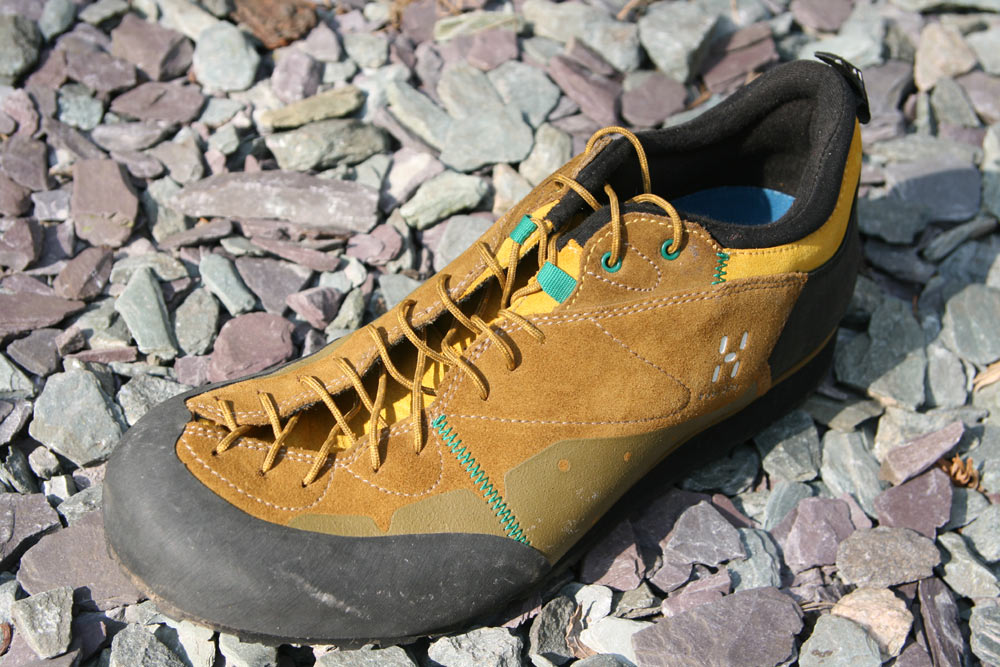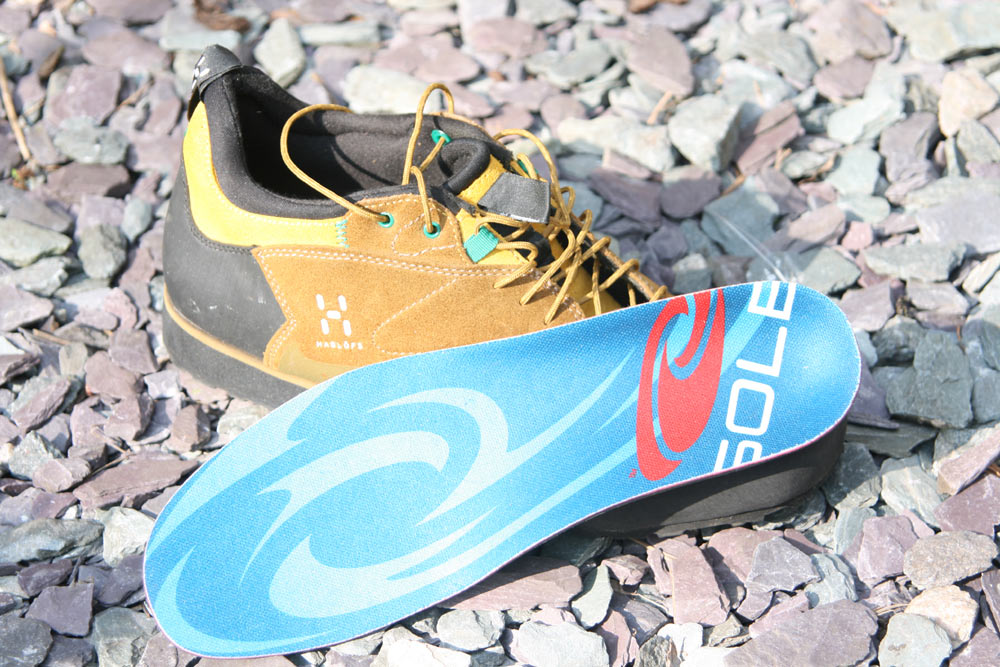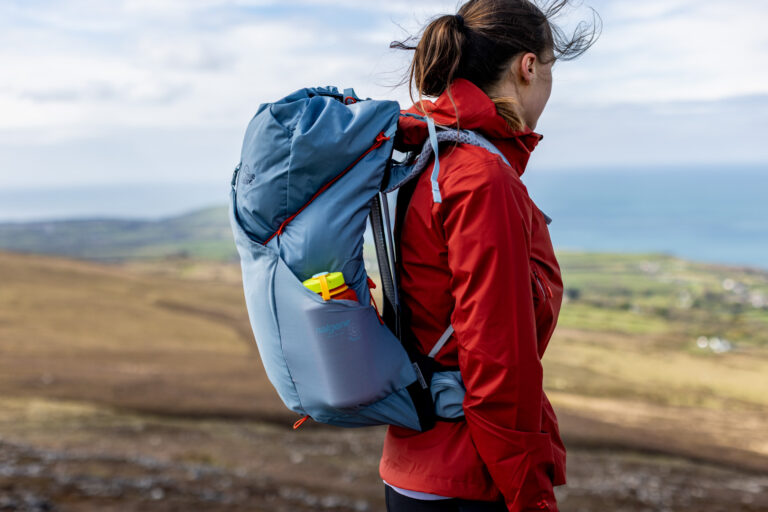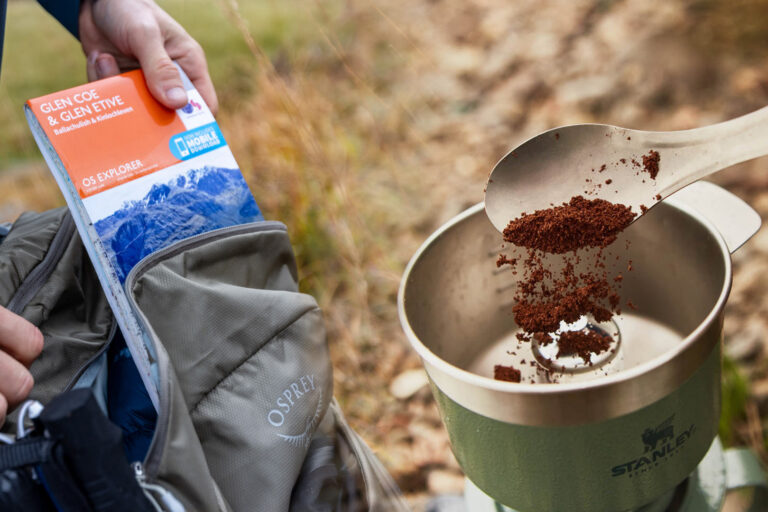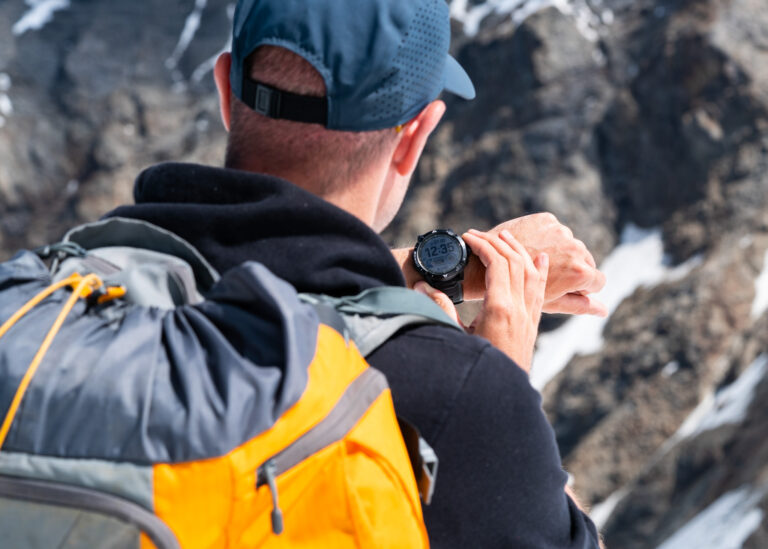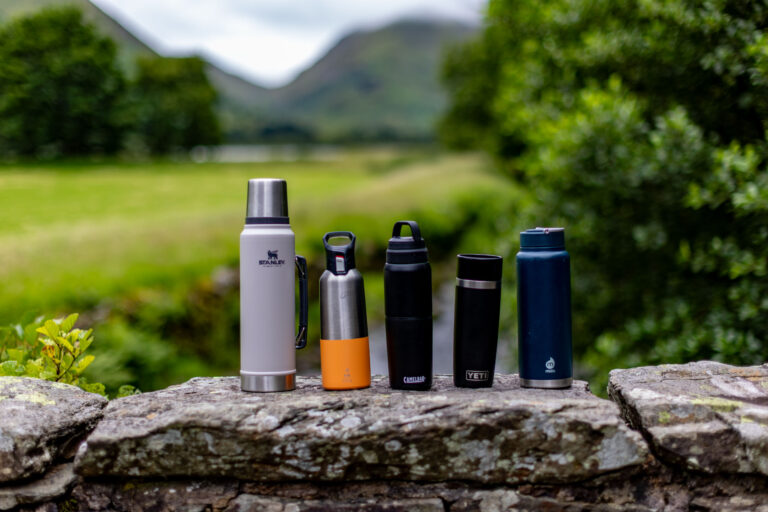Approach shoes are supposed to be the ultimate technical all-rounders. In theory they should be comfortable enough to walk in to the bottom of the crag, route or via ferrata, grippy and capable once you’re on the rock and still have enough grip to cope with descents on iffy terrain and the walk out.
Sounds easy, but the balance is hard to get right, but to help you, here are some general guidelines followed by quick looks at three different top approach shoes, the new Scarpa Crux, the unconventional adidas Terrex Solo and theHaglöfs Roc Legend.
What To Look For?
Sole Units An ideal approach shoe sole unit will have sticky rubber, maybe not quite as sticky as a full rock boot, but certainly with enough tack to give enhanced grip when you are on the rock. It’s not just about rock grip though, you also want enough of a lugged tread pattern to cope with softer terrain that you might encounter walking out from a route. Many technical soles also have a block of smooth rubber at the toe to maximise the amount of rubber in contact with the rock when climbing.
Cushioning A lot of approach shoes use the EVA foam cushioning favoured by running shoe makers. Great to save weight and for cushioning but prone to distort badly when standing and particularly edging on narrow holds. it’s also liable to soften with use and scuffs badly with abrasion. Ideally you want rearfoot cushioning for walking comfort mixed with thinner layers at the front of the boot for climbing precision.
Stiffness More compromise here. A flexible forefoot will feel good for walking, but again, less stable when standing on small holds. A really stiff sole unit may work better for edging, but be less effective when you’re smearing on slabs.
Uppers It’s alll about fit. A loose boot will tend to allow your foot to move around making the shoe feel imprecise. Look for a snug fit with a rock boot-type lacing system going down to the toe for a snugged-up feel when you do reach the rock. Loosen off for walking.
Rands A protective rubber rand at the toe will both reduce scuffing to the upper on rocky terrain and scree and give extra grip if you need to stuff the toe of the shoe into a crack in the rock.
Overall It is all about balance – in general terms, the better a shoe is on rock, the less comfortable it’s likely to be when you’re walking about, so you need to make a decision based on how you’re going to use the shoe and your own personal abilities. What works for one person, may not be right for someone else.
Scroll down the page to find out more about the three scrambling shoes.

